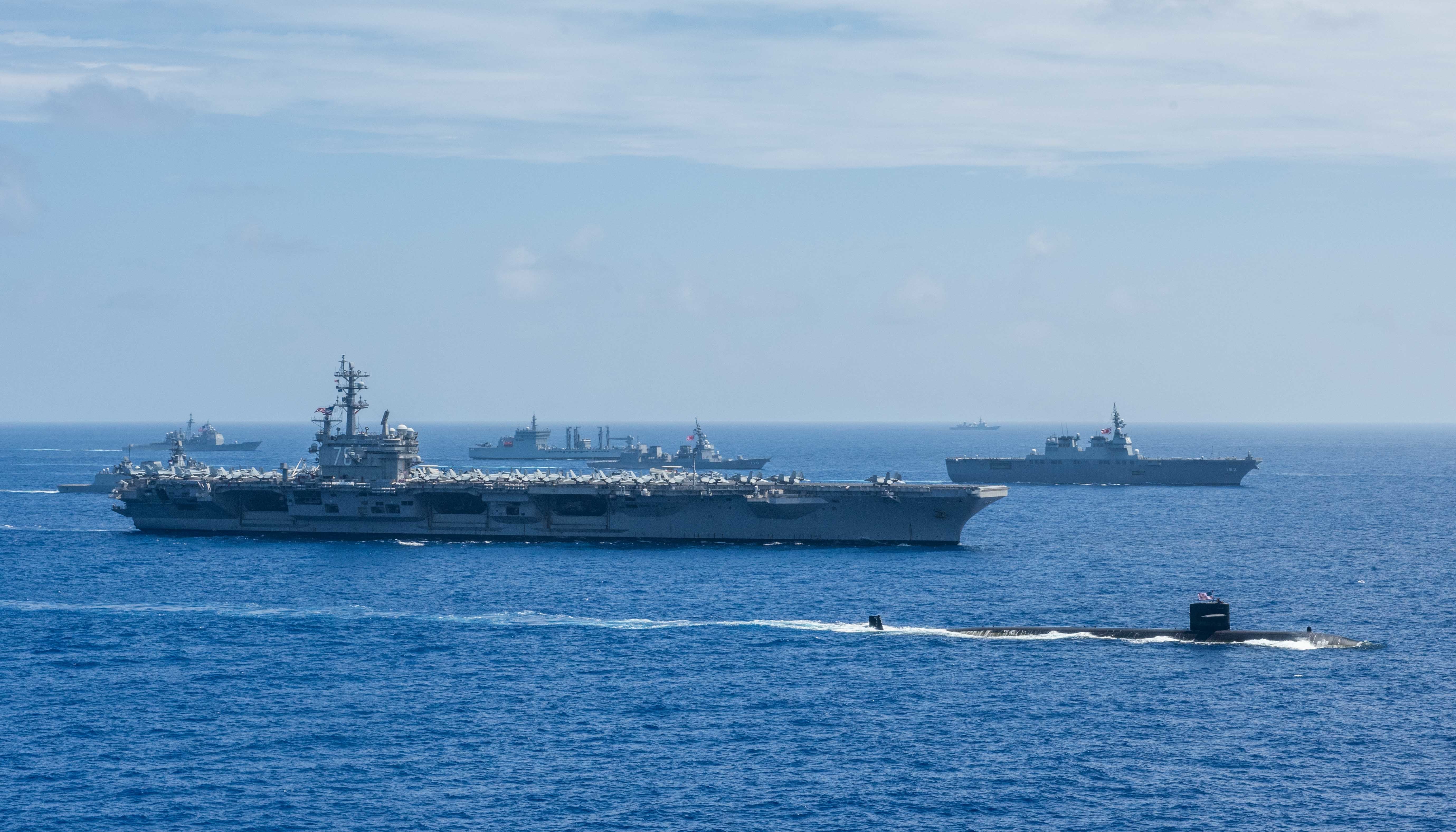
Australia will join the India-led Malabar 2020 naval exercise next month, operating along with the U.S. and Japan in an exercise meant to send a message to China.
The exercise will be a first for the so-called “Quad,” the Pacific cooperation between Japan, India, Australia and the U.S.
“As India seeks to increase cooperation with other countries in the maritime security domain and in the light of increased defense cooperation with Australia, Malabar 2020 will see the participation of the Australian Navy,” reads an Oct. 19 statement from the Indian government.
Australian Defence Minister Linda Reynolds said in a statement that “high-end military exercises like Malabar are key to enhancing Australia’s maritime capabilities, building interoperability with our close partners, and demonstrating our collective resolve to support an open and prosperous Indo-Pacific.”
“Exercise Malabar also showcases the deep trust between four major Indo-Pacific democracies and their shared will to work together on common security interests,” she added.
India has hosted the Malabar series with the U.S. Navy since 1992, and in 2015 Japan joined as an annual participant.
Amid increasingly aggressive behavior from Chinese vessels – not just People’s Liberation Army Navy (PLAN) warships but also from the Chinese coast guard, fishing fleet and commercial ships – throughout the Indo-Pacific region, there have been increasing calls for collaboration among higher-end navies.
Australia has become more active in conducting freedom of navigation operations meant to push back against China, including sailing alongside American warships in May near the site of a standoff between Chinese and Malaysian ships in the South China Sea. Japan and China continue to disagree over the Senkaku or Diaoyu islands, and India saw kinetic action with Chinese forces in multiple locations along their border in May and June.
In July The Hindu reported that India’s Ministry of Defence was mulling allowing Australia to participate, a decision that was complicated by ongoing tensions between India and China.
“Australia first requested for observer status in the trilateral exercise in April 2017. While New Delhi was reluctant to accept Canberra’s request, the bilateral cooperation has gone up significantly over the years. Last month, the two countries signed the long-pending Mutual Logistics Support (MLSA), elevated their partnership to Comprehensive Strategic partnership and also announced a joint declaration on a shared vision for maritime cooperation in the Indo-Pacific,” the outlet reported.
The U.S. and Japan have previously expressed support for Australia joining the event.
Next month, the @Australian_Navy, @indiannavy, @jmsdf_pao_eng & @USNavy – the #QUAD – will conduct #Malabar naval exercises early next month to strengthen cooperation and regional security. #Malabar2020 ???? ????#ForcetobeReckonedWith #FreeandOpenIndoPacific https://t.co/Pvdz9n0iIv
— USNavyCNO (@USNavyCNO) October 20, 2020
The U.S. solidifying a multilateral partnership with Australia, India and Japan not only brings together like-minded navies but also has geographical advantages, with the triangle formed between the three partners encompassing the most contested waterspace in a growing competition with China.
This week, the U.S. Navy joined the Royal Australian Navy and Japan Maritime Self Defense Force in the South China Sea for a trilateral operation. Arleigh Burke-class guided-missile destroyer USS John S. McCain (DDG-56), JS Kirisame (DD 104) of the JMSDF, and HMAS Arunta (FFH 151) of the RAN are exercising in what is the fifth time in 2020 that Australia, Japan and the U.S. have conducted operations together in the U.S. 7th Fleet area of operations. This follows an earlier and larger exercise in July, when five Australian ships drilled in the Philippine Sea with the Ronald Reagan Carrier Strike Group and a Japanese destroyer.
U.S. Indo-Pacific Command commander Adm. Phil Davidson said last week in an event hosted by the Foundation for Defense of Democracies that the Quad represented not only a military counter to China but also a diplomatic and economic one, too.
“What those four countries can bring to bear in diplomacy, in economic power, in the sharing of values that underline all the free and open Indo-Pacific visions that each nation has put forward, which are well overlapping, as I mentioned earlier, that’s a great convergence. That’ll actually be the most powerful aspect of it,” he said.
He also talked about the importance of these partners operating common systems and “helping ensure that our allies and partners purchase the kind of equipment that drive together our interoperability and compatibility. I’ve been quite encouraged. We’ve been a long partner with Japan and Korea, for example, on ballistic missile defense. We’re partnered with those nations and Australia, for example, on fifth-gen fighters, and other elements [of] integrated air missile defense. I’m encouraged by the kind of things that India is starting to buy when it comes to U.S. elements as well.”
Several Indo-Pacific navies operate the Aegis Combat System – including the U.S., Japan, Australia and South Korea – making collaboration at sea all the easier. The U.S., Australia and India all operate some variant of the P-8 maritime patrol aircraft, adding to the commonality among these fleets.





